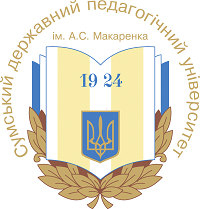ENVIRONMENTAL NON-FICTION LITERATURE ON CHERNOBYL THEME FOR CHILDREN AND ADULTS: A COMPARATIVE ASPECT (BASED ON THE MATERIAL OF THE BOOKS BY K. MIKHALITSINA, S. DVORNYTSKYI "REACTORS DO NOT EXPLODE. A SHORT STORY OF THE CHERNOBYL DISASTER" AND A. HIGGINBO
DOI:
https://doi.org/10.32782/philspu/2024.7.12Keywords:
environmental literature, non-fiction literature, Chernobyl, Chernobyl theme, children's and adolescent literature, literature for adultsAbstract
It has not been the first century that mankind is not only the organizer of the race to transform nature into an inexhaustible source of resources that man mercilessly uses, but mankind is also the only participant in the race. Such a consumerist attitude to nature leads to cataclysms, catastrophes, the damage of which is difficult to assess. One of these consequences is the accident at the Chernobyl nuclear power plant. The desire to understand the causes of the accident, to provide truthful information about those events for everyone, regardless of age and knowledge of atomic energy, contributes to the creation of environmental non-fiction literature on the Chernobyl topic for both children and adults. The article analyzes environmental topics in non-fiction works for children and adults, the relevance of which is reinforced by the need for a clear understanding of those events by people of different age categories, in order to prevent the occurrence of such disasters. An important emphasis of environmental literature on the Chernobyl topic is the desire of the authors not only to present as objectively as possible the real events that took place at the fourth power unit of the Chernobyl nuclear power plant during the explosion, but also a deep understanding, through critical analysis, of the factors that led to such consequences . It is non-fiction literature designed to truthfully, clearly and logically acquaint the reader with facts and real events, without any stereotypes, myths and conjectures, because what humanity faced after this humanitarian and man-made disaster is so terrible for their full understanding, but at the same time vital for understanding. The peculiarities of the depiction of the Chernobyl disaster in environmental non-fiction literature for children and adults in the books of K. Mikhalitsina and S. Dvornytskyi "Reactors do not explode" are outlined. A brief history of the Chernobyl disaster and A. Higginbotham "Midnight in Chernobyl: The Untold Story of the World's Greatest Nuclear Disaster"; genre features of the books are indicated and common and distinctive features are revealed.
References
Варданян М. Reading the Chornobyl Catastrophe Within Ecofiction. Children´s Literature in Education. 2022. 53. Pp. 1-17.
Варданян М. В. Літературна географія ілюстрованих дитячих книг (на матеріалі українських творів та перекладів ХХ–ХХІ століття). Географія і текст: літературний вимір : колективна монографія / за редакцією Т. Черкашиної. Харків : ХНУ імені В. Н. Каразіна, 2022. С. 17-40.
Коваленко М. Образ Божої матері у рецепції Т. Шевченка та І. Драча (на матеріалі поем «Марія» та «Чорнобильська мадонна»). Літературознавчі студії. Київ. Вип. 1. 2015. С. 235-244.
Черноусова М.. Екологічна проблематика збірки Є. Гуцала «Діти Чорнобиля». Українська література в просторі культури і цивілізації. Запоріжжя. 2023. С. 140-143.
Філат Т. Особливості художнього трактування трагедії Чорнобиля в ліриці Ліни Костенко. Проблеми сучасного літературознавства. 2018. 26. С. 183-193
Міхаліцина К., Дворницький С. Реактори не вибухають. Коротка історія Чорнобильської катастрофи. Київ: Портал, 2020. 136 с.
Higginbotham Adam. Midnight in Chernobyl: The Untold Story of the World's Greatest Nuclear Disaster. New York: Simon&Schuster, 2019. 555 Pp.







